Too Scared to Start Writing Again
Understand the strengths and weaknesses in your writing, and you can become your own teacher and improve your writing skills.
This article discusses how to spot and fix the following 8 writing weaknesses:
1. Boring your readers
2. Lack of focus
3. Lack of substance
4. Dodgy flow
5. Long-winded sentences
6. Gobbledygook and misplaced jargon
7. Fluff
8. A bad sense of rhythm
![]()
Writing strengths and weaknesses
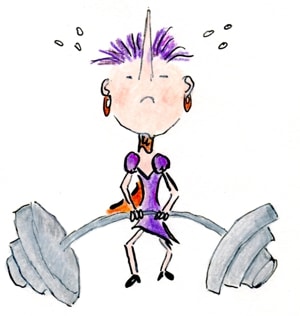
Do you ever read your content and wonder …
Why is this not better?
But then you struggle to decide what's actually wrong?
Being your own writing teacher can feel like a tough task.
After sweating over your draft, you need to decide what's good and what needs improving. It's a matter of tough love for your favorite sentences and precious words. You have to scrap sections and scrub off the dirt to communicate your message with power.
But how can you spot your writing weaknesses so you can let your words shine?
Become your own writing teacher
Remember your favorite teacher from high school?
Be as kind as she was, and tell yourself what you're doing well already. Perhaps you write fantastic openings, or your word choice is excellent, or you share super-valuable tips and have a wealth of experience to draw from. Remember to celebrate these writing strengths.
As a good teacher, you can't be negative about your own progress. It's your task to spot your weaknesses, but also to encourage yourself to embrace your learning and have fun.
Want to write better? Get my best writing tips for business here > > >
To improve your writing skills, you need to:
- Understand what makes writing good—you can do this by creating your own swipe file
- Learn to spot the weaknesses in your writing—I've listed the most common weaknesses below
- Practice fixing your weaknesses—that's how your content improves
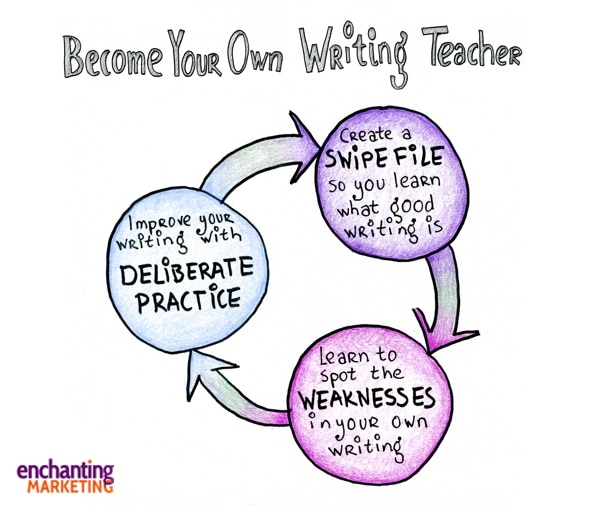
Trying to solve all problems in one go creates a learning experience from hell.
To make learning how to write more fun, address weaknesses one by one. The list below is in order of importance.
Ready to explore?
Writing weakness #1: You're boring your readers to tears
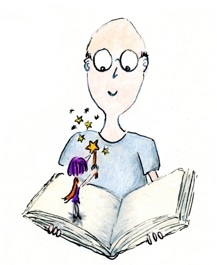 When writing we can't see our readers.
When writing we can't see our readers.
So, it's easy to forget who they are, and write as if lecturing a faceless crowd.
But writing isn't a monologue. We write to communicate with our readers. And when we write to educate, entertain and inspire, no content is boring.
How to spot whether you're boring your readers:
If you feel bored writing your content, then this is a sign something isn't working. Have you lost your mojo? Have you lost your connection to an (imaginary) reader?
Or perhaps you don't know who your ideal reader is or you don't like them?
How to turn this common weakness into a strength:
- Describe the person you're writing for—it can be a real or imaginary person
- Write down in one sentence which specific problem your content solves
Remember, when our writing eases our reader's pain, solves their struggles and improves their lives, our content can not be boring.
Writing weakness #2: Lack of focus
 It's a common misunderstanding that content has to be comprehensive to be good.
It's a common misunderstanding that content has to be comprehensive to be good.
But, think about your readers … how many of them feel overwhelmed? And would they prefer one valuable tip to improve their life or an in-depth bible with all do's and don'ts?
As writers, we often feel insecure. We think we're not good enough. We wonder what we can do to make our content better, more valuable, and more extensive. We want to write THE definitive guide.
But the idea that longer content is always better is wrong. The task of a writer is not to be more comprehensive, but to communicate a message and inspire a reader to take action—to implement their advice or to buy a product if it's right for them.
How to spot this weakness in your writing:
Can you distill the essence of your content in one sentence?
If you can't, try this exercise:
- Write down in one sentence which problem your content solves
- Define in one sentence the "sunny destination" of your content: how does your content make your reader's life better?
Remember, your content makes an impact when it makes your reader's life better—even if the improvement is tiny.
Writing weakness #3: Lack of substance
 Substance goes hand in hand with having a clear focus in your content.
Substance goes hand in hand with having a clear focus in your content.
Instead of an article sprawling out into multiple directions, focus on one specific topic and add more depth to your argument. For instance, a personal story adds depth because it can illustrate how you've benefited from your tips; and statistics or research results help back up your arguments.
How to spot whether your writing lacks substance:
Does your content remain abstract or superficial? Have you given examples to make your advice concrete? And if you're writing sales copy, do you communicate both benefits and features?
Consider adding more substance:
- A personal story, examples or case studies to illustrate your key point
- A metaphor to make your point crystal-clear
- Research results to back up your story with facts
- Quotes from experts or testimonials to put the spotlight on your key point
- Common mistakes your readers should avoid
- Answers to questions readers are dithering about
- Suggestions on overcoming hurdles that may block readers from implementing your advice
- Drawings or graphs to add comprehension
Remember, substance is about the depth of your arguments, not about the length of your article. It's about the insight you offer your readers. Even an email of 100 words can have substance. A nugget of wisdom. A super-practical tip. A spark of inspiration.
To write substantial content, first find focus, then add substance.
Writing weakness #4: Dodgy flow
 Content that flows pulls readers smoothly from the first to the last word, without hiccups and hurdles. It's about the logical arrangement of information and stories.
Content that flows pulls readers smoothly from the first to the last word, without hiccups and hurdles. It's about the logical arrangement of information and stories.
An easy way to think about flow is to imagine yourself having a conversation with your ideal reader. Are you taking your reader by the hand and explain a problem step by step? Does your sales page answer the questions when they come up in their mind?
A sales page often follows this structure:
- What's this page about—what problem does your product solve?
- What exactly does the product or service do and why does it matter to buyers?
- How does it work?
- How do buyers know you're legit?
- What exactly is the deal?
- How to buy?
If you're unsure where to place content, ask yourself: When would my reader ask this?
Blog posts work in a similar way. Start with the most important information:
- Why would the reader care about your tips in a post? What problem does your article solve?
- How exactly do readers solve this problem?
- How do readers overcome hurdles to implement your advice?
How to spot a lack of flow in your writing:
Read your content at a decent pace to determine the flow. When you read fast enough you're not bogged down by details and it becomes easier to grasp the big picture:
- For every section, write down which question the content answers (or alternatively, summarize in one bullet point)
- Read through the questions or bullet points—do they feel logical or can you re-arrange them in a logical order? Can you skip any sections?
Writing weakness #5: Long-winded sentences
 Do you find my content easy to read?
Do you find my content easy to read?
My trick is to keep my sentences short.
At school, you may have been taught to write long, impressive sentences. But shorter sentences are easier to consume and make your content more accessible to all.
How to spot long-windedness in your writing:
- The Hemingway app (the online version is free) highlights long and very long sentences in your writing
- Microsoft Word provides readability stats, including your average sentence length
- Several other online tools measure readability stats, too
To reduce your average sentence length, chop the longest sentences in two or three. Communicate one tiny idea in each sentence, and ensure each sentence follows the previous one logically—don't jump ahead as you may lose your reader.
Your aim is not to make every sentence as short as possible. That's monotonous and tiring to read. So, vary long and short sentences, and try keeping your average sentence length to 14 words max. An occasional long or very long sentence is fine.
Writing weakness #6: Gobbledygook and jargon
 In marketing, gobbledygook refers to catchphrases so overused they've lost their meaning. And jargon are words only insiders know.
In marketing, gobbledygook refers to catchphrases so overused they've lost their meaning. And jargon are words only insiders know.
Gobbledygook is always wrong because they make your content sound hyped up. In contrast, jargon can be fine—as long as your readers understand your words.
How to spot jargon and gobbledygook in your writing:
- Would you use the word in a face-to-face conversation with your ideal reader?
- When you read out your content, does it sound like you?
- Do you write to clarify or to impress?
Gobbledygook and jargon sneak into our writing when we forget who we are, when we forget why we're in business (to help!), and when we write for a faceless crowd rather than our favorite clients. So, imagine yourself in a cozy cafe with your favorite client, and use only the words you'd use while drinking a beer together.
Writing weakness #7: Fluff
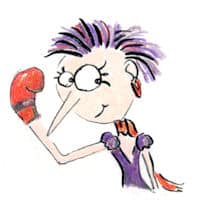 Meaningless words are fluff—they weaken the impact of your writing. It's like adding water to wine. Brrr. Shiver.
Meaningless words are fluff—they weaken the impact of your writing. It's like adding water to wine. Brrr. Shiver.
Fluffy words are phrases like very, actual, in my opinion, really, just. But also verbs like to make, to provide, and to add. These words are fluffy because you can't visualize them.
When you scrap meaningless words and focus on powerful phrases, your content becomes more concise and your message becomes clearer. Like good wine, it engages all senses.
How to spot fluff in your writing:
The key trick to getting rid of fluff is counter-intuitive: Focus on meaningful words first. Then try to rewrite each sentence with as few weak phrases as possible. (Here's more detail about this technique)
Many words have some meaning, but aren't particularly strong. So don't fret too long whether a word is meaningful or not. Go with your gut feeling; it's not an exact science.
Weakness #8: A bad sense of rhythm
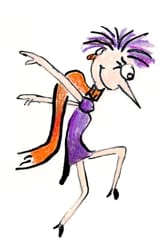 Rhythm is one of the most underrated aspects of writing.
Rhythm is one of the most underrated aspects of writing.
But readers can sense the rhythm in your writing—just like music can guide your workout rate. Even when people aren't reading your copy aloud, they can hear its rhythm because they listen to their inner speech.
A good rhythm makes a reading experience more pleasurable.
How to spot whether your content lacks rhythm:
Read your copy aloud (or use an app to read the content to you) and listen to its rhythm—do you speed up and slow down? Do you have natural pauses?
To make your rhythm more pleasurable:
- Vary sentence length—mix long and short sentences, and try a few ultra-short sentences
- Pay attention to transition words—such as but, and, in contrast, for example—so readers go smoothly from one sentence to the next
How to become your own writing teacher
Let's not pussyfoot around it.
Improving your own writing is a challenge.
When you don't have a teacher to cheer you on, it's easy to feel down and worry you'll never be good enough.
So, remember to stop negative self-talk, and cheer yourself on instead. Your writing journey should be fun.
Focus on one weakness at a time. Start at the top of this list, and work your way down—tackle the weaknesses one by one.
Embrace your learning experience.
Treasure your writing moments.
And remember how lucky you are to have time to write and improve your skills.
![]()
Source: https://www.enchantingmarketing.com/writing-weaknesses/
0 Response to "Too Scared to Start Writing Again"
Post a Comment